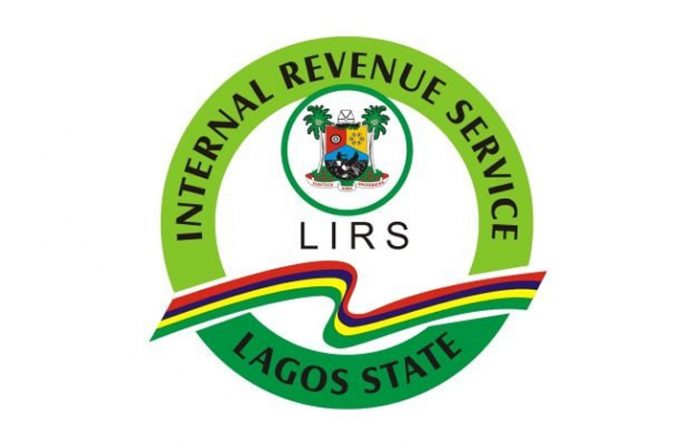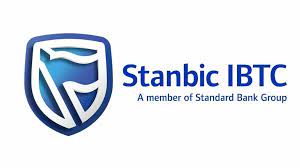April 17, 2019/CBN
Introduction
- Non Interest Financial Institutions (NIFIs) mobilize large percentage of their funds using Mudarabah and Wakalah contracts. In Mudarabah, the bank is acting as the Mudarib (entrepreneur) and the fund providers as the Rabb-ul-Mal otherwise called Profit Sharing Investment Account Holders (PSIAHs). In Wakalah, the bank acting as Wakeel (investment agent) for the PSIAHs, earns a Wakalah fee, and an incentive fee in the event of the realized profit exceeding an agreed threshold, and the agreed profit goes to the PSIAHs.
- Mudarabah contract by its nature entails the sharing of profit between the contracting parties based on pre agreed profit sharing ratio and the bearing of loss by the fund provider except in cases of proven negligence, misconduct or breach of contract by the entrepreneur in which case the entrepreneur would bear such loss.
- NIFIs in Nigeria essentially maintain two different types of Mudarabah accounts used for deposit mobilization namely: Restricted Investment Accounts (RIAs) and Unrestricted Investment Accounts (URIAs). Under the RIA contract, the bank shall act strictly based on the investment mandate of the customer, while under URIA contract the bank is free to invest the funds as it deems fit.
- In practice, NIFIs co-mingle such PSIA deposits with other funds like shareholders’ funds and current account deposits into different pools and invest in profitable ventures.
- Being an equity-based contract, the PSIAHs are expected to bear the credit risk of any counterparty the funds are invested with as well as the market risk of the assets in which the funds were invested.
- It is therefore the responsibility of NIFIs to put in place adequate framework that would ensure prudent management of assets funded by PSIA deposits and ensure that they discharge their fiduciary responsibilities.
- NIFIs are equally expected to put in place sound risk management framework that would adequately identify, measure, monitor and control all the risks faced by the assets funded by the PSIA funds.
- NIFIs are also expected to put in place sound corporate governance framework that would ensure adequate protection of the rights of IAHs, and emphasize the fiduciary responsibility of the NIFI in managing the PSIAs.
Objectives of the Guidelines
- The objectives of this Guidelines is to provide the minimum standard to be met by NIFIs operating in Nigeria before they can recognize PSIA deposits as risk absorbent and thus deduct same from the computation of Risk Weighted Assets (RWAs) towards the calculation of Capital Adequacy Ratio (CAR) as specified in the Guidance Notes on Regulatory Capital For Non-Interest Financial Institutions in Nigeria issued by CBN.
- This Guidelines complements the following regulations for NIFIs in Nigeria issued by the CBN:
- Guidance Notes on Calculation of Capital Requirements for Non-Interest Financial Institutions;
- Guidelines on Income Smoothing for Non-Interest Financial Institutions;
- Guidance Notes on Disclosure Requirements to Promote Market Discipline for NonInterest Financial Institutions.
Scope of the Guidelines
- This Guidelines shall be applicable to all NIFIs duly licensed by CBN which may include:
- Full-fledged non-interest deposit money bank or subsidiary.
- Full-fledged non-interest microfinance bank or subsidiary.
iii. Non-interest branch/Window of a conventional bank or financial institution
- A development finance institution registered with the CBN to offer non-interest financial services either full-fledged or as a subsidiary.
- A primary mortgage institution registered with the CBN to offer non-interest financial services either full-fledged or as a subsidiary.
- A finance company registered with the CBN to provide non-interest financial services, either as a full-fledged or as a subsidiary.
Legal Basis
- This Guidelines is issued by the Central Bank of Nigeria (CBN) pursuant to the powers conferred on it by the provisions of Section 33 (1) (b) of the CBN Act 2007; Sections 23(1); 55(2); 59(1)(a); Section 61 of Banks and Other Financial Institutions Act (BOFIA) 1991 (as amended) and Section 4(1)(I) of the “Regulation on the Scope of Banking Activities and Ancillary Matters, No. 3, 2010”.
Management Of Displaced Commercial Risk
- Mudarabah contract entails the sharing of profit based on pre agreed ratio between the bank as the mudarib (fund manager) and the IAHs as the Rabbul Mal (fund provider) as well as the bearing of losses, if any, by the IAHs except in cases of misconduct, negligence or breach of contract by the NIFI.
- However, in practice due to either commercial pressure, NIFIs based on acceptable smoothing mechanisms may absorb all or a proportion of losses from assets funded by the IAH’s funds in order to mitigate potential massive withdrawal of funds. This practice exposes the banks to a peculiar type of risk called Displaced Commercial Risk (DCR), which requires allocating adequate capital to cover such risk.
- DCR may also arise as a result of rate of return risk, where the returns from the assets funded by the IAH’s are lower than the prevailing market rates. In order to avoid the risk of massive withdrawal of funds by the IAHs, NIFIs try to match these returns by forfeiting part of or all of their shares in the Mudarabah profit. This exposes the banks to DCR, which may ultimately require the provision of additional capital.
- The proportion of the DCR borne by the NIFIs is represented by the Alpha (a) factor.
- Alpha is a measure of the proportion of actual credit and market risk on assets financed by IAHs’ funds that is transferred to shareholders. It has a value ranging from 0-1.
General Requirements
- Before a NIFI can recognize PSIA deposits as risk absorbent and hence deduct same from its total RWA, it must satisfy all the requirements of these Guidelines.
- NIFIs’ Board of Directors (BOD) and Senior Management shall ensure that its PSIAHs’ funds are invested and managed in their best interest. They shall fulfill their fiduciary responsibilities towards the IAHs.
- NIFIs BOD shall ensure the establishment of a Governance Committee as board committee, which shall, among other things, ensure adequate protection of the rights of the IAHs, and that the NIFIs fulfils its fiduciary responsibilities in managing the IAHs’ accounts.
- The Governance Committee is to be headed by an Independent Director.
- The principle of proportionality is to be observed in the appointment of the Governance Committee, as such for smaller and less complex NIFIs, the function of the Committee can be assigned to an existing Board committee such as Board Audit Committee or Board Finance & General Purpose Committee. This function shall be performed in liaison with the ACE.
Policies and Guidelines on Investment Accounts
- Before a NIFI can recognize PSIA deposits as risk absorbents, it shall have in place policies and guidelines duly approved by its board of directors and endorsed by their respective Advisory Committees of Experts (ACE) on the following:
- A detailed Mudarabah contract that captures the rights and liabilities of the NIFI as the Mudarib and the PSIAH. The contract should explicitly disclose all the information relating to the Mudarabah contract to enable prospective PSIAH make informed decision before entering into the contract.
- The contract documentation shall emphasize the fact that in case of liquidation, PSIAHs have no claim as creditors over the assets of the NIFI. However, they have a claim to the assets financed by their funds. The document shall also obtain the permission of the prospective PSIAHs for the NIFI to operate Profit Equalization Reserve (PER) and Investment Risk Reserve (IRR) during periods when returns from the assets of PSIAs are higher than the average market returns by deducting a portion of their share of gross profit before distribution.
iii. NIFIs shall put in place a sound risk management framework to manage the funds of IAHs.
- NIFIs shall have a good corporate governance framework that clearly shows the relationship between the NIFI and the PSIAHs and which emphasizes the fiduciary role of the NIFI to exercise due care in managing the PSIAs.
Comprehensive Contract Document
- The Mudarabah contract upon which the PSIAs were created shall spell the rights, obligations and liabilities of the contracting parties including profit sharing ratio and the fact that the PSIAHs are to bear the loss of the investment, if any, except in the case of negligence, breach of contract or misconduct on the part of the NIFI.
- The contract document shall also clearly disclose the portion of their earnings (if any) that shall form part of the PER and the IRR for the purpose of income smoothing during periods of low returns or loss respectively.
- The basis upon which profit is calculated and distributed, either based on minimum balance or average balance, shall be agreed between the NIFI and the account holders and clearly stated in the contract.
- NIFIs shall ensure that the contract documents are endorsed by their ACE and duly approved by the CBN.
Establishment of Sound Investment Policies and Strategies
- It is the responsibility of senior management of NIFIs to put in place sound investment policies and strategies that ensure IAH’s funds are invested in the right class of assets, which takes into cognizance the risk appetite of the IAHs.
- The BOD shall continually review such investment policies and strategies to ensure they are strictly adhered to in the investment of the PSIAHs’ funds. The policies shall be reviewed from time to time to reflect any changes in the fundamentals of the investment activities.
Establishment of Sound Risk Management Strategies
- To safeguard the assets and the general interest of the IAHs, the senior management of NIFIs shall ensure the existence of a sound risk management policies and strategies that identify, measure, monitor and control the various type of risks associated with the assets funded by PSIAHs.
- The BOD shall approve such policy and ensure its full implementation by senior management of the NIFI.
Deployment of Staff with the Right Skills and Competencies to Manage the IAH’s Funds.
- The senior management of NIFIs shall ensure deployment of staff with the right skills and competencies to manage the assets funded by the PSIAHs’ funds. Such staff should have the responsibility of investing the funds and continuous monitoring of its performance.
- The management shall ensure that the staff are trained on a continuous basis on investment strategies and risk management in order to safeguard the assets of PSIAHs. 3.6 Deployment of the Right Information Technology System
- Every NIFI shall have in place the right Information Technology (IT) system that would ensure the following activities are carried out seamlessly:
- Allocation of deposits from different sources into investment pools. That is from PSIAHs’ funds, shareholders’ funds, current account deposits, etc.
- Allocation of income and expenses among the different deposits in the pool.
iii. Movement of assets to/from different investment pools.
- Distribution of profit and bearing of loss among different deposits that make up the pool.
- Disclosure of the mechanism of calculation of profits to the IAHs.
Creation And Management Of Investment Pool And Tagging Of Assets
- NIFIs mobilize their deposits on Mudarabah and Wakalah basis. The NIFIs usually commingle these funds with their shareholders’ funds as well as current and saving accounts deposits (or a significant part of them) into the same pool for investment purposes.
- NIFIs shall have in place a well-defined framework for the creation of investment pool as well as the distribution of profits and loss (if any) among participants in the pool and the allocation of expenses to the various contributors to the investment pool. The framework shall among other things cover the following areas:
- The basis of allocating funds to each investment pool as well as the amount and percentage of money from each source of funds allocated to a pool.
- The objectives, duration, scope, investment strategy and risk management strategies of managing the investment pools.
iii. Proper tagging of the assets funded by each pool and segregating them from the other assets of the bank. This shall enable the NIFI to easily allocate profit and loss to the respective sources of funds.
- Profit sharing ratio and the basis for allocation of profits, loss and expenses among the respective sources of funds that make up the pool.
- It shall be noted that only direct expenses (such as Takaful, transport expenses, shipping expenses, etc.) shall be charged to the PSIAHs’ funds. All other indirect expenses must be charged to the shareholders’ funds and current account deposits (since they are guaranteed by the bank)
Management Of Displaced Commercial Risk And Rate Of Return Risk Using Income Smoothing Techniques
- NIFIs shall practice income smoothing as specified by the Guidelines on Income Smoothing for Non-Interest Financial Institutions in Nigeria issued by CBN.
Disclosures
- To ensure transparency and accountability on the part of the NIFIs, they are expected to make the following disclosures via an appropriate medium (such as financial statements, pamphlet, flyers and contract documents):
- The method of smoothing employed by the NIFIs and the rationale for choosing it against other methods.
- Methods used in the valuation of PSIAHs’ assets.
iii. Amounts outstanding in the respective reserves of PER and IRR and the total amount utilized from those reserves to smoothen returns payable to the PSIAHs in any given financial year.
- Policy on the transfer to and from PER and IRR respectively.
- Amount of mudaribs’ share of profit foregone (if any) to smoothen PSIAHs’ returns.
- Amount transferred from NIFI’s earning if any (either current or retained) to smoothen PSIAHs’ returns.
vii. The amount and percentages of various sources of funds (PSIA, bank’s equity, current account, etc) allocated to respective investment pools.
viii. Criteria used in allocating profits and charging of expenses among contributors to investment pools.
- It should be noted that the total balance outstanding in IRR and the portion of the PER belonging to the PSIAHs shall be classified as part of the equity of PSIAHs.
For further guidance on disclosure requirements relevant to the investment account holders, please refer to the Guidance Notes on Disclosure Requirements to Promote Market Discipline for Non-Interest Financial Institutions issued by the CBN.













